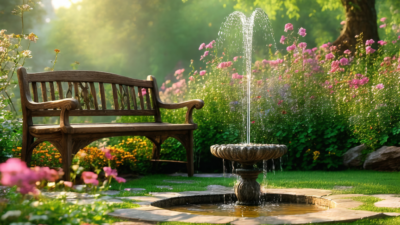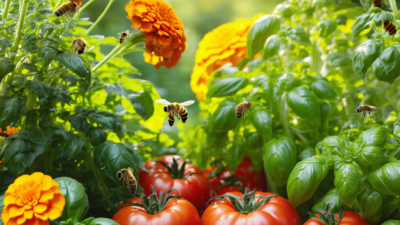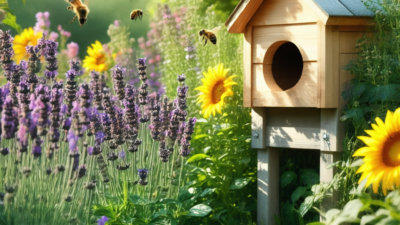Thriving in the Concrete Jungle: Mastering Urban Gardening
Urban gardening has become more than just a hobby; it’s a movement. In the heart of bustling cities, people are turning rooftops, balconies, and even tiny backyards into lush green spaces. This trend isn’t just about aesthetics—it’s about reconnecting with nature, improving air quality, and fostering community bonds. If you’re considering diving into urban gardening, this guide will provide you with everything you need to know to get started.
Why Urban Gardening?
Urban gardening offers a myriad of benefits that extend beyond the obvious. For starters, it provides fresh, organic produce right at your doorstep. Imagine picking tomatoes for your salad or herbs for your favorite dish without leaving your home. It’s not just convenient; it’s also healthier since you can control what goes into your food.
Moreover, urban gardens act as natural air purifiers. Plants absorb carbon dioxide and release oxygen, helping to combat the pollution that comes with city life. They also provide habitats for birds and insects, contributing to local biodiversity. Plus, tending to a garden is a great way to reduce stress and connect with nature, even in the middle of a busy city.
Types of Urban Gardens
Urban gardening isn’t one-size-fits-all. Depending on your space and resources, you can choose from several types:
- Rooftop gardens: Perfect for those with access to unused rooftop spaces.
- Balcony gardens: Ideal for city dwellers with limited outdoor space.
- Container gardens: Great for small spaces, using pots and planters.
- Community gardens: Shared spaces where neighbors can grow together.
- Vertical gardens: Space-saving solutions that use walls or fences.
Selecting the Right Plants
Not all plants thrive in urban environments. Consider factors like sunlight, wind, and space when choosing what to grow. Some excellent options include:
- Herbs: Basil, mint, parsley, and rosemary are easy to grow and add freshness to your meals.
- Vegetables: Cherry tomatoes, peppers, and leafy greens like spinach do well in containers.
- Fruits: Strawberries, raspberries, and dwarf citrus trees can be grown in pots.
- Flowers: Marigolds, petunias, and nasturtiums add color and attract pollinators.
Necessary Tools and Equipment
To start your urban garden, you’ll need a few essential tools:
- Pots and containers: Choose ones with drainage holes to prevent waterlogging.
- Soil: Use high-quality potting soil rich in organic matter.
- Fertilizers: Opt for natural or organic options to keep your plants healthy.
- Watering tools: A watering can, hose, or drip irrigation system will keep your plants hydrated.
- Gardening gloves: Protect your hands while working with soil and plants.
Design Ideas for Your Urban Garden
Your urban garden is more than just a collection of plants—it’s an extension of your personal style. Here are some design ideas to inspire you:
- Mix and match: Combine different heights, textures, and colors for visual interest.
- Add lighting: Use string lights or solar-powered lamps to create a cozy evening ambiance.
- Incorporate recycled materials: Repurpose items like old tires, pallets, or even shoes as planters.
- Install vertical gardens: Maximizing space by growing upwards rather than outwards.
Maintaining Your Urban Garden
Like any garden, urban gardens require regular care to thrive. Here are some maintenance tips:
- Watering: Ensure your plants get enough water, especially during hot weather.
- Weeding: Regularly remove weeds that compete with your plants for nutrients and space.
- Fertilizing: Feed your plants with balanced fertilizers to promote healthy growth.
- Pest control: Use natural methods like companion planting or insecticidal soap to keep pests at bay.
- Pruning: Trim back overgrown plants to encourage bushier growth and more flowers or fruits.
Community and Collaboration
Urban gardening isn’t just an individual endeavor; it’s a community activity. Join local gardening groups, attend workshops, and participate in community garden projects. These interactions not only provide valuable knowledge but also foster connections with like-minded individuals who share your passion for sustainable living.
Tips for Beginners
If you’re new to urban gardening, start small and gradually expand as you gain experience. Begin with a few easy-to-grow plants and simple containers. As you learn more about what works in your space, you can introduce more variety into your garden. Remember, it’s okay to make mistakes—each one is an opportunity to grow and improve.
Embracing the Future of Urban Gardening
Urban gardening is more than a trend; it’s a necessary step towards creating sustainable cities. By transforming unused spaces into productive green areas, we can enhance our quality of life while contributing to environmental conservation. Whether you’re growing food, flowers, or simply enjoying the beauty of nature, urban gardening offers something for everyone.
So, why wait? Start your urban garden today and become part of this exciting movement towards a greener, healthier future!





